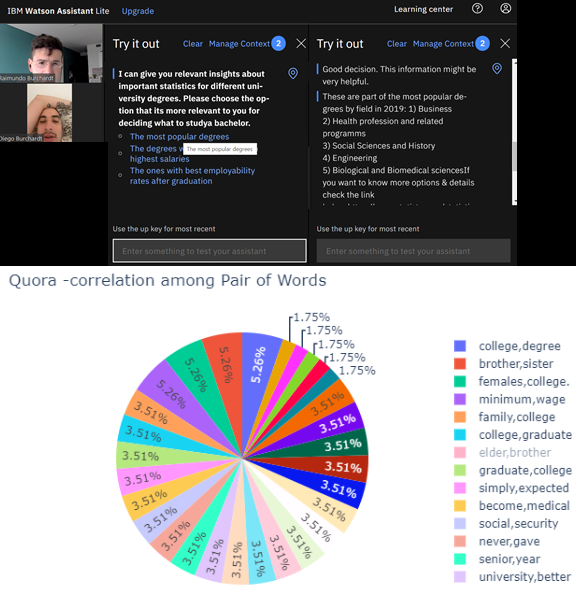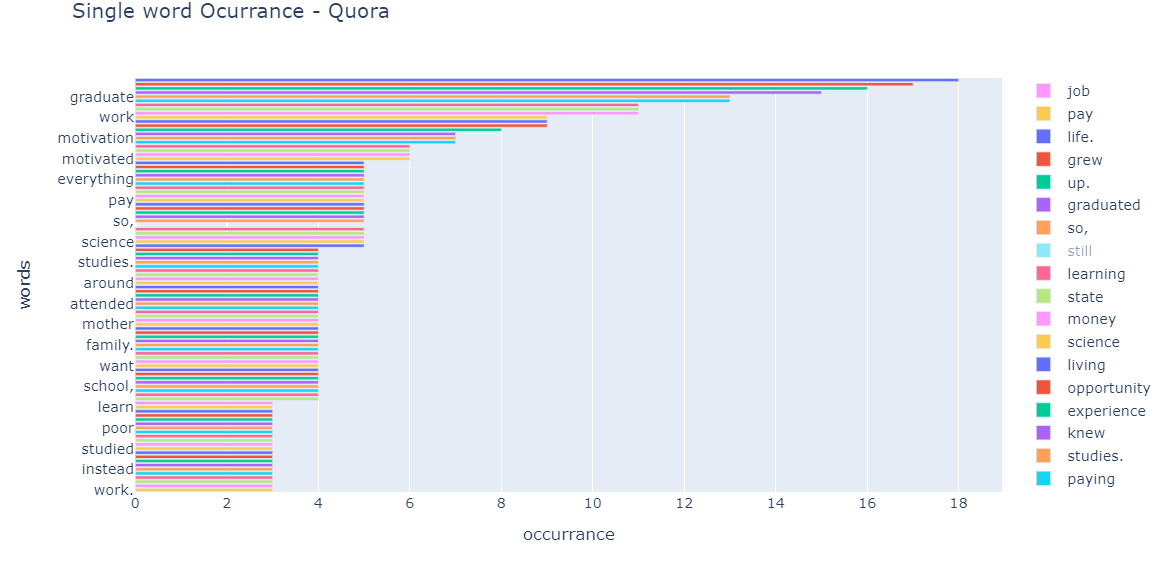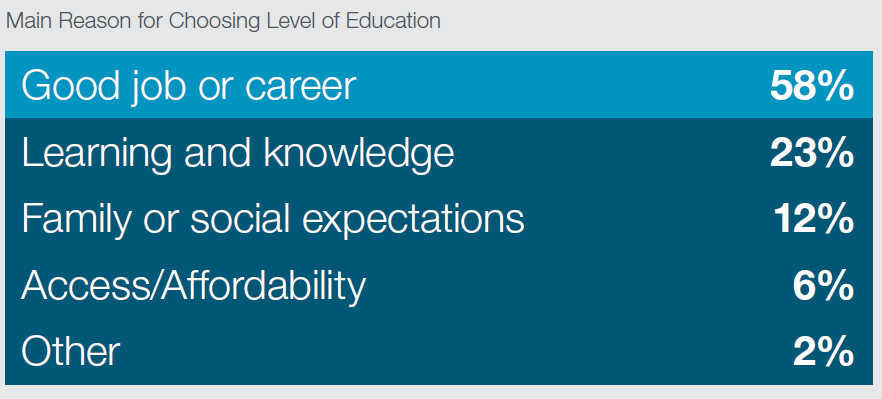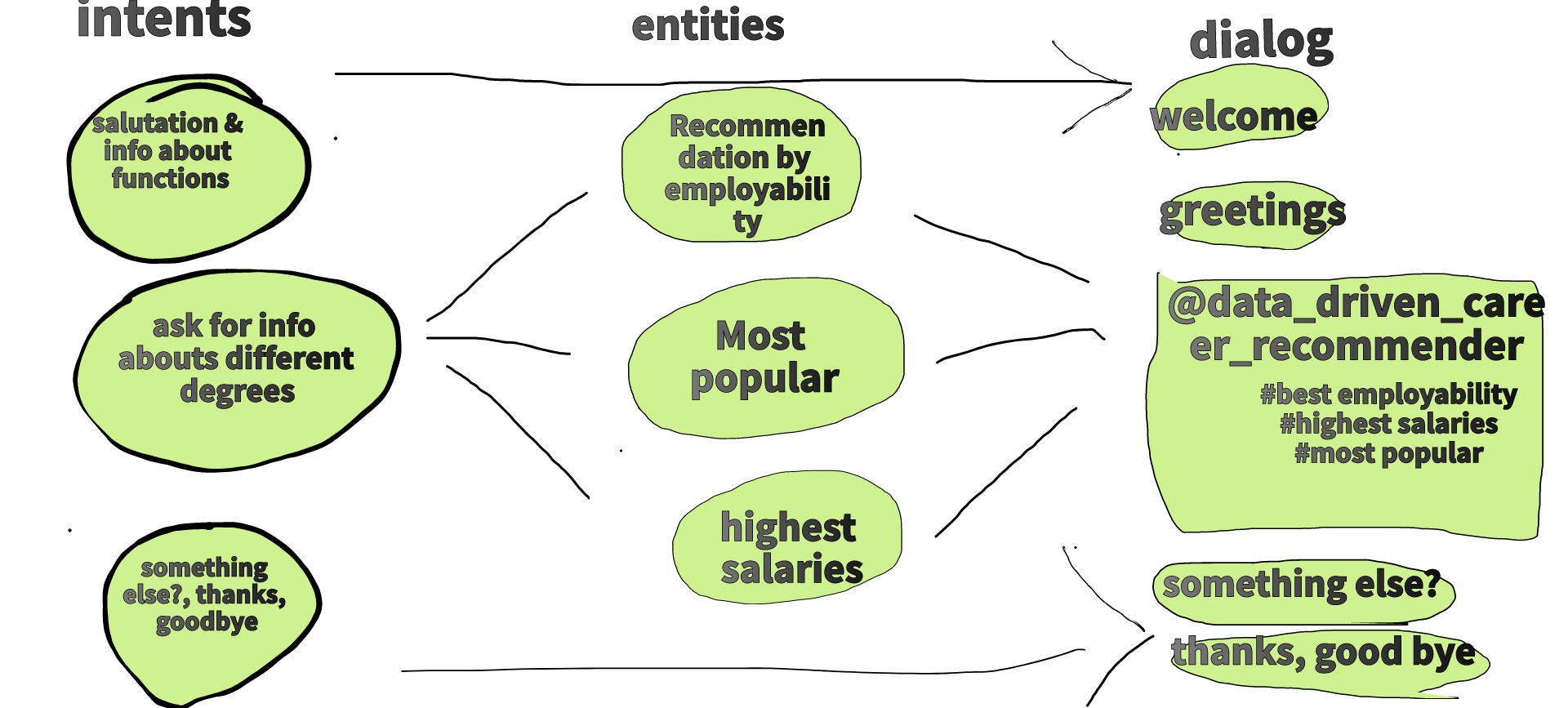PREMISE
A different perspective for student counselling
SYNOPSIS
Deciding what to study is not easy for young school students. Just the thought of making a decision that will affect them for the rest of their lives makes them uncertain. Therefore, many schools have counseling departments. Student counseling is defined as an interaction process co-joining the counselee, who needs assistance and the counselor who is educated to give this assistance to help the counselee learn to deal more effectively with himself and the reality of his environment (Shaterloo & Mohammadyari 2011). This orientation is undoubtedly relevant for students and has delivered positive results. However, not for everyone. A research found that 43% of the students feel that counselors do not understand them. (Hanımoğlu, 2018). Furthermore, student counseling is not affordable for all. Thus, rethinking counseling using chatbots as data-driven counseling assistance could bring more accessibility and expand the student counseling experience to complement traditional methods.

SUBSTANTIATION
The aim of this project is to expand the traditional methods of student counseling by facilitating processes of informing students, generating accessibility and alternatives that can complement current student counseling systems.
During the preliminary research different academic papers were found highlighting the importance of this matter. There is a need for proper career counseling to ensure that learners develop an understanding of what they want in life. (Todd, 2017) Nevertheless due to human reasons its not possible to always get the best outcome of student counseling due to lack of funds of educational institutions, the lack of human-capital, expertise and knowledge among others. Indeed, further research shows that students complain about different aspects when talking about their advisors: (Hanımoğlu, 2018)
- Lack of understanding of student points of view
- Lack of knowledge about different careers
- School counselors that do not reply promptly
- Accesibility
Thus, a chatbot which is accessible 24/7 and learns from users input thanks to Artificial Intelligence should be considered to expand the scope of student counseling, as discovered during the user testing, where most of the users expressed that accessibility and the potential to bring together different sources of information on one platform were powerful features.
One of the major challenges for this kind of solutions is to know what is interesting for students. The process of gathering relevant data for having a functional and intuitive chatbot depends on how well this is trained, what is strictly correlated to how many times it was used and how many data it has collected. Thus, for fulfilling the gap of not having enough entry datapoints for the chatbot, 150 answers to the question “ What motivated you to go to university” were scrapped from www.quora.com and compared to other researchs in the field, finding the following keywords:
- family expectations
- thirst of knowledge
- money
- to have a career
- experiences
- because of social pressure
With this in mind the goal was to develop a simple tool that helps students providing information and career counseling and see whether it is useful or not.
Further information about these topics can be found in:
CRITICAL MAKING
The initial approach to the project was to build a web application on Django, (Python web framework) which allows front and back end development. The purpose of this web app was to give students information about relevant subjects oriented to their motivations when deciding what to study. The relevant datapoints would be obtained from researching papers, text mining and web scrapping of Q&A forums such as www.quora.com. However, my knowledge of Django is at a very immature level and the fact of advancing in online courses on this technology while developing a project turned out to be unfeasible. Therefore the concept was pivoted to develop a Chatbot using IBM Cloud Service and feed the Chatbot in its initial phase with data obtained from web scrapping. This represented significant challenges in terms of having to take a technology from scratch and start experimenting with it but also an opportunity to learn through trial and error.
PRELIMINARY RESEARCH
The aim of the chatbot is to provide information based on scenarios that represent the needs of different learners. Therefore, as mentioned above, it was important to investigate students’ motivations for entering university.
I personally found interesting to diversify the sources of information, therefore I chose to use Quora, a Q&A website in which I got responses of 150 users who commented on their motivations for entering university. For extracting the data I used Python and Selenium. The most mentioned keywords were compared with motivations published on a research of 200.000 students in the United States about their motivations (Strada, 2018) and the data was cleaned with pandas, nltk, textblob, correlated with Bigram for forming pair of words and visualized with Plotly.



The resulting preliminary research concluded with a simplified version of the datapoints that would be part of the first iteration of the chatbot.
Prototype one:
The focus of this iteration is to provide users with information that might be relevant for them. This based on the datapoints mentioned above which were then converted into 4 alternatives for the user to choose among the options that best suits their initial approach. Each option provides different information based on links that already exist on the cloud. Thus, showing the usability of the chatbot as a tool that interacts and facilitates information.
I want to study to:
- to learn more:showed in preliminary research with keywords that can be seen in the pictures above and confirmed by the research.
- to earn money:based on keywords such as pay, wage, it represents a straighforward alternative to show students the highest earning degrees.
- to have a stable career:many people is uncertain avoid jobs decisions due to unemployment. A first guidance towards the most safe careers is therefore an initial approach for a chatbot that aims to give helpful advice.
- I dont know: this option represents the combination of different options such as family expectations, social expectations, leave parents place, among others. This option drive students asking to the most popular degrees according to general statistics from 2020. It represents a start point.
User testing:
Tester Profile:
Age range: 23 – 27
Gender Distribution & others:
- Four males
- Two uncertain about what to study
- Two Master graduated student
- One female
- Master student
Three tests were carried in Zoom (Tester guided verbally the interaction with the chatbot) and two in persons were users were proactive in the interaction. The general feedback was that the idea indeed was interesting. For the three testers via Zoom it seemed to be an opportunity to reach more vulnerable places were schools cannot afford such programs. The two other users who tested it saw major potential in gathering information within a platform to facilitate researching about degrees. Other comments were that the chatbot need improvements, such as making the interaction more precise having more Q&A to make the interaction more human. Another relevant aspect was that the given information was in some cases too general. Therefore, it was suggested to mention statistics for each option to provide major relevance and besides the sources to all of them.
My thoughts after this were that indeed the chatbot could work as a good tool for gathering information and presenting it in an accessible way. However I was skeptic that the chatbot should be more human. I personally think that this tool should complement human interactions and not replace them. But it is true that in some places there is no budget or accessibility for student counseling. Maybe because of the origin of the three users that tested via Zoom, they saw accessibility as a relevant feature for more vulnerable places ( they are from South America, which still struggles with poverty and a very expensive educational system)
Prototype 2:
Considering the feedback from the first prototype, it was decided to look for 100% data-driven information available in internet to make the chatbot a tool that delivers information backed by prestigious entities. For this purpose I researched additional sources that refer to what mainly concerns students before and during university and that are often important for career planning. The information presented in the chatbot was from sources such as statista.com and hesa.ac.uk (see in References, two entities that are specialist in data gathering and analysis.
The defined datapoints for clustering degrees were:
- Most popular
- With the highest salaries
- Best employability rates after graduation
The flow of the chatbot was therefore defined:

The Patchbot 2.0
User testing
The user test was done by the same group. (Profile information in Prototype one)
In this iteration, all users found that the given information was more significant when it was backed with official sources from important entities. Three Users saw also possibilities to narrow the recommendations by fields e.g. by “science, social, creative”. They still missed that the interaction was still not similar to a “human interaction”, what was relevant in a subject such as student counseling.
CONCLUSIONS
Thanks to technology there is plenty of room for innovation in different areas and chatbots represent indeed a powerful tool for fulfilling voids where people cannot get answers. However, one of the main conclusions after discussions with the testers is that human interaction cannot easily be replaced by digital interaction. Especially in situations where young people face difficulties and stress in decision making. In these situations, empathy and understanding are key to calm and for a cool-headed decision making.
Both prototypes were seen as “informative tools” rather than strictly student counselors. This is however within the expectations as this project was seen as a complement for current counseling. Nevertheless a more advanced chatbot able to cluster recommendations by fields and detection of personalities could be a more powerful tool and could generate the sensation of chatting with a real human on the other side of the screen, what could enhance user experience and give students a sense of support and understanding, i.e. a chatbot with more traces of emotional intelligence could be very useful.
For developing such a tool its important to have deep knowledge of chatbots and understanding of what makes student counselors good. This is indeed a very interesting field to dive deeper for generating a tool that offers accessibility while generating a empathetic interaction which provide future students not only with information but with a feeling of being understood and of having a real interaction.
REFERENCES
Hanımoğlu, E. (2018). The Perceptions of Students about the Role of School Counselors on Career Selection. European Journal of Educational Research, 7(4), 763–774. https://doi.org/10.12973/eu-jer.7.4.763
https://www.hesa.ac.uk/news/18-06-2020/sb257-higher-education-graduate-outcomes-statistics/study
Todd, C. (2017). The art of counseling. Techniques: Connecting Education & Careers, 92(1), 28-33.
Shaterloo, A., & Mohammadyari, G. (2011). Students counselling and academic achievement. Procedia – Social and Behavioral Sciences, 30, 625–628. https://doi.org/10.1016/j.sbspro.2011.10.121
https://studyflats.com/the-10-most-employable-degrees/
https://www.statista.com/statistics/1095623/most-popular-degree-fields-in-europe/
https://www.statista.com/statistics/633793/highest-paying-bachelor-degrees-in-the-us/
https://www.statista.com/statistics/185334/number-of-bachelors-degrees-by-field-of-research/